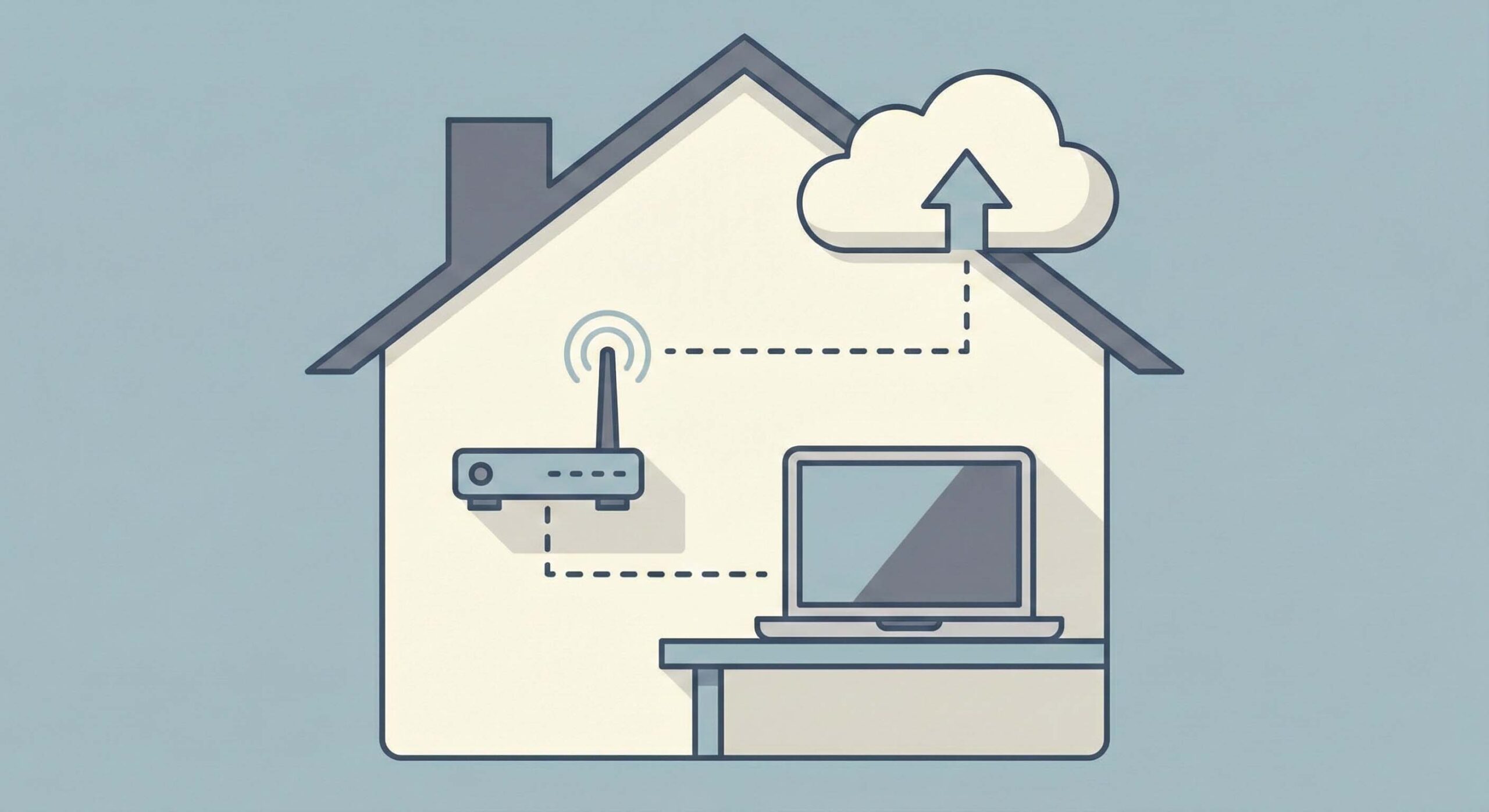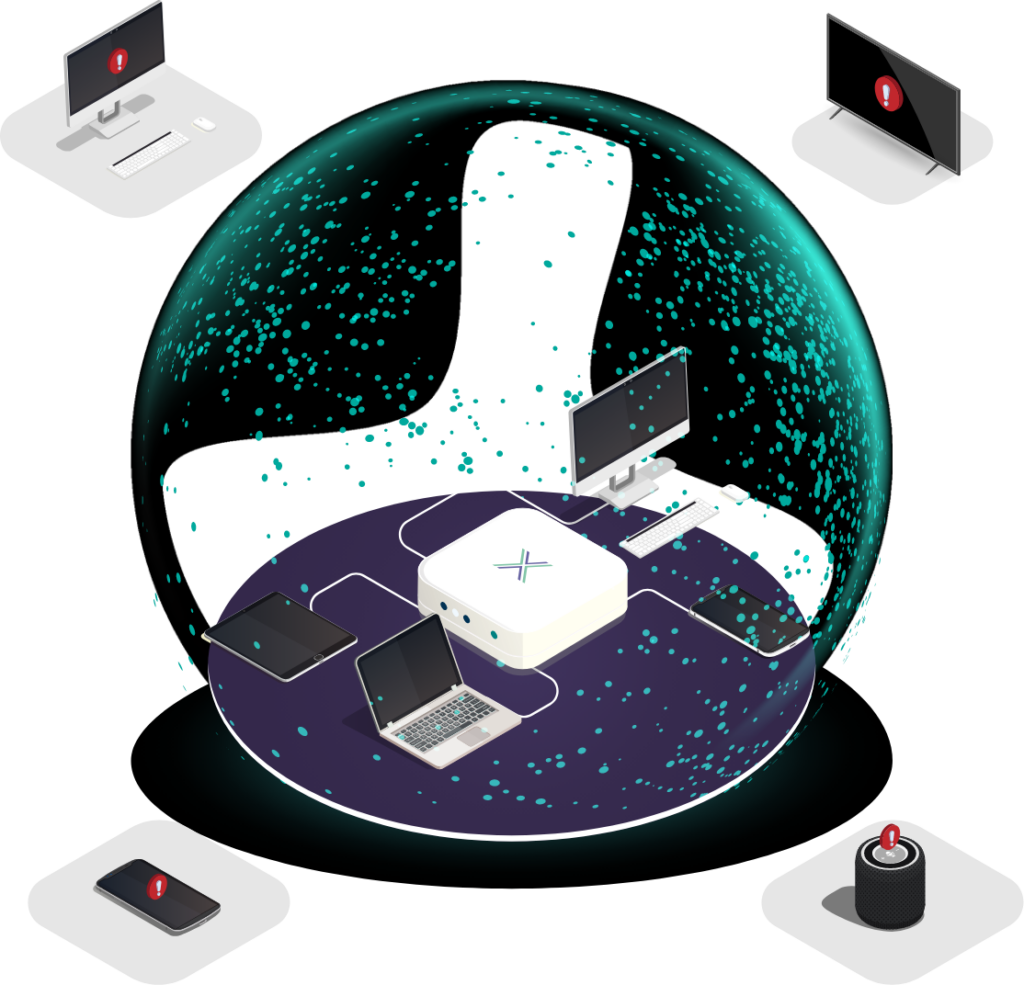Why securing the ‘uncontrolled network edge’ matters more than ever.
As more employees connect to work systems from home, organisations are facing a growing cybersecurity blind spot: the home network.
Unlike office environments, where IT teams control infrastructure and enforce security policies, the home is an “uncontrolled network edge.” Companies have little visibility into the routers, connected devices, or network activity that staff rely on every day. It is an increasingly attractive target for attackers, especially when it provides a route into sensitive data and systems.
This guide sets out practical, proportionate steps businesses can take to improve security when staff access work systems from home, without adding unnecessary complexity or cost.
1. Provide Secure, Managed Devices
Start with the basics. Company-managed laptops and mobile devices should be the only equipment used for work purposes. These devices should come pre-configured with:
- Up-to-date security software, including endpoint protection and firewalls
- Built-in policies to block unauthorised software installations
- Remote monitoring to ensure devices stay compliant
Without this level of control, even basic protections like encryption and secure login cannot be guaranteed.
2. Secure the Network Itself, Not Just the Devices
One of the most overlooked risks is the home router. Most households use off-the-shelf routers that have not been patched or updated in years, and companies rarely know what is running on them.
To close this gap:
- Deploy secure, managed routers for staff who access sensitive data or systems
- Avoid relying on employee-owned routers or manual configuration guides
- Ensure home networks used for work have strong, unique passwords and modern encryption (WPA2 or WPA3)
It is unrealistic to expect staff to manage this consistently on their own.
3. Enforce Least Privilege and Access Controls
Not everyone needs access to everything. Use role-based access controls (RBAC) to:
- Limit each employee’s access to only the data and systems they need
- Reduce the risk of lateral movement in the event of compromise
Avoid giving admin rights on work devices, and ensure any software installations are approved centrally.
4. Strengthen Authentication
At a minimum:
- Use multi-factor authentication (MFA) for all remote access and critical applications
- Enforce complex, unique passwords via a password manager
- Implement Single Sign-On (SSO) if possible, to reduce password reuse
The weakest link is often someone reusing the same password across personal and professional accounts.
5. Keep Router Firmware Updated. But Be Realistic
Security updates do not just fix bugs. They patch known vulnerabilities that attackers actively exploit.
However, there is a critical caveat: while applying updates is essential, many router manufacturers continue to ship firmware that contains known vulnerabilities, particularly in the open-source libraries and components they rely on. This means that even fully updated devices may still be exposed.
To minimise this risk:
- Enable automatic updates on all work devices and software
- Replace any routers that do not support regular or verifiable firmware updates
- Monitor for outdated software and remove unsupported applications
Patching matters, but it is not a complete solution especially at the network edge, where device diversity and lack of oversight create lingering blind spots.
6. Provide Regular Cybersecurity Training
Home networks can be compromised through phishing, rogue devices, or simple user mistakes. Regular training helps staff:
- Recognise suspicious emails and websites
- Avoid risky behaviour like using personal USB drives
- Understand why security controls matter, even at home
Simulated phishing campaigns are a simple way to keep awareness high without lecturing staff.
7. Use Secure Communication Tools
Work discussions and document sharing should never happen via personal accounts or unsecured platforms.
Ensure staff use:
- Encrypted email and messaging apps approved by IT
- Secure file-sharing platforms
- Verified company collaboration tools
Make it easy for staff to report suspected phishing or social engineering attempts without fear of blame.
8. Control Access to Company Data
A Zero Trust approach assumes no device or user is automatically trusted, even inside the home.
To enforce this:
- Require all access requests to be verified based on identity and device status
- Use Endpoint Detection and Response (EDR) tools to flag suspicious activity
- Encrypt all sensitive data at rest and in transit
Combining this with secure networking helps close the loop on both device and network risk.
9. Back Up Critical Data Automatically
Lost or encrypted data can be catastrophic if backups are not in place.
You should:
- Implement automated cloud backups for key files
- Ensure encryption is enabled on all backups
- Test recovery procedures regularly to ensure business continuity
Do not rely on users to manage backups manually.
10. Prepare for Incidents, Even at Home
Security events can happen anywhere. Make sure home-based employees know what to do.
- Set up clear incident response procedures and reporting channels
- Run occasional drills to rehearse the basics
- Provide direct contact details for IT or security teams
A fast, coordinated response reduces damage and reassures staff.
The Bottom Line – Security Starts at the Network Edge
The reality is simple: if staff are connecting from networks you do not control, you cannot fully protect your business. The home router may be outside your line of sight, but it is squarely within an attacker’s.
Even companies with strong cybersecurity policies often overlook the limitations of consumer hardware. Regular updates help, but they rarely fix all known flaws. That is why organisations must think beyond the checklist and look at how to secure the network itself, not just the endpoints.
Loxada provides a more robust approach. Our secure, managed routers run custom firmware that replaces the manufacturer’s code entirely. Devices are automatically patched, hardened against tampering, and create a physically separated work network within the home. It is a simple way to bring visibility and control back to the network edge without overburdening your IT team.
Contact us for a straightforward conversation about how to protect your organisation at the uncontrolled edge.

